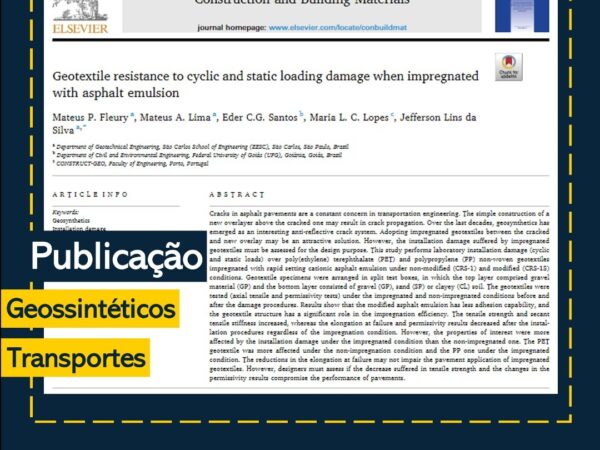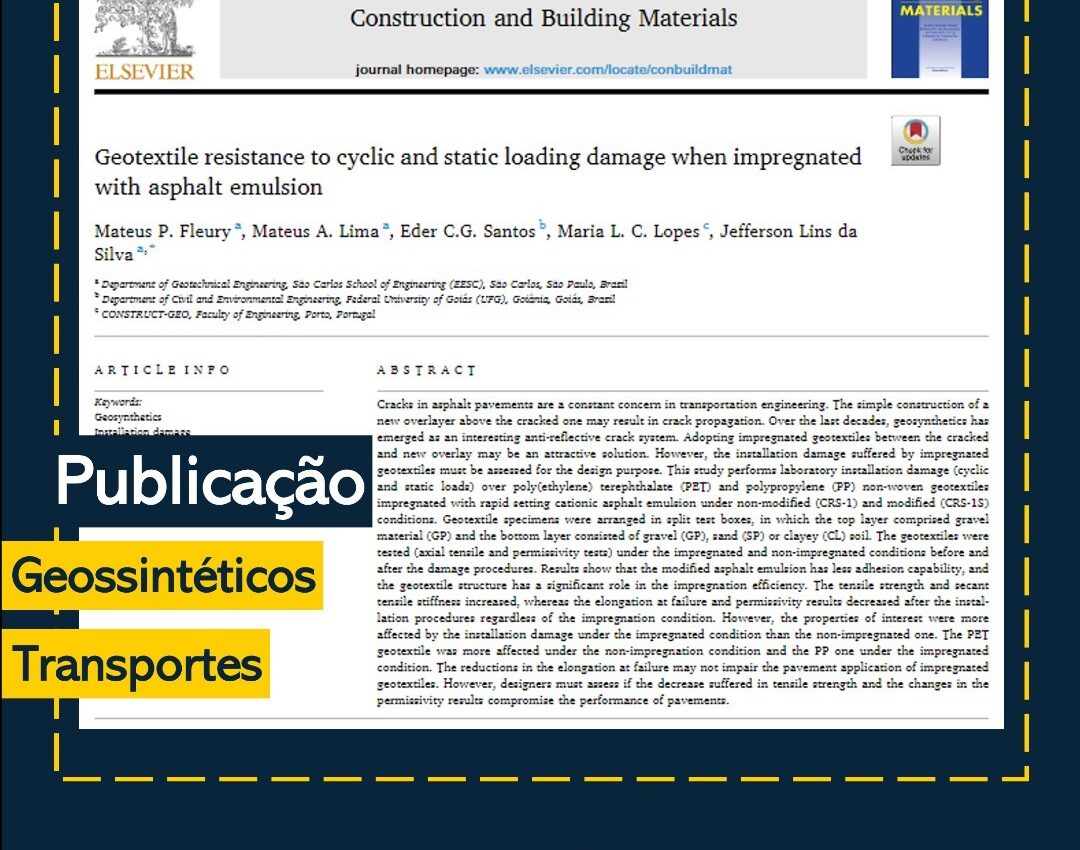

Autores: Mateus P. Fleury, Mateus A. Lima, Eder C.G. Santos, Maria L. C. Lopes, Jefferson Lins da Silva
Abstract
Cracks in asphalt pavements are a constant concern in transportation engineering. The simple construction of a new overlayer above the cracked one may result in crack propagation. Over the last decades, geosynthetics has emerged as an interesting anti-reflective crack system. Adopting impregnated geotextiles between the cracked and new overlay may be an attractive solution. However, the installation damage suffered by impregnated geotextiles must be assessed for the design purpose. This study performs laboratory installation damage (cyclic and static loads) over poly(ethylene) terephthalate (PET) and polypropylene (PP) non-woven geotextiles impregnated with rapid setting cationic asphalt emulsion under non-modified (CRS-1) and modified (CRS-1S) conditions. Geotextile specimens were arranged in split test boxes, in which the top layer comprised gravel material (GP) and the bottom layer consisted of gravel (GP), sand (SP) or clayey (CL) soil. The geotextiles were tested (axial tensile and permissivity tests) under the impregnated and non-impregnated conditions before and after the damage procedures. Results show that the modified asphalt emulsion has less adhesion capability, and the geotextile structure has a significant role in the impregnation efficiency. The tensile strength and secant tensile stiffness increased, whereas the elongation at failure and permissivity results decreased after the installation procedures regardless of the impregnation condition. However, the properties of interest were more affected by the installation damage under the impregnated condition than the non-impregnated one. The PET geotextile was more affected under the non-impregnation condition and the PP one under the impregnated condition. The reductions in the elongation at failure may not impair the pavement application of impregnated geotextiles. However, designers must assess if the decrease suffered in tensile strength and the changes in the permissivity results compromise the performance of pavements.
Last modified: 4 de julho de 2023






